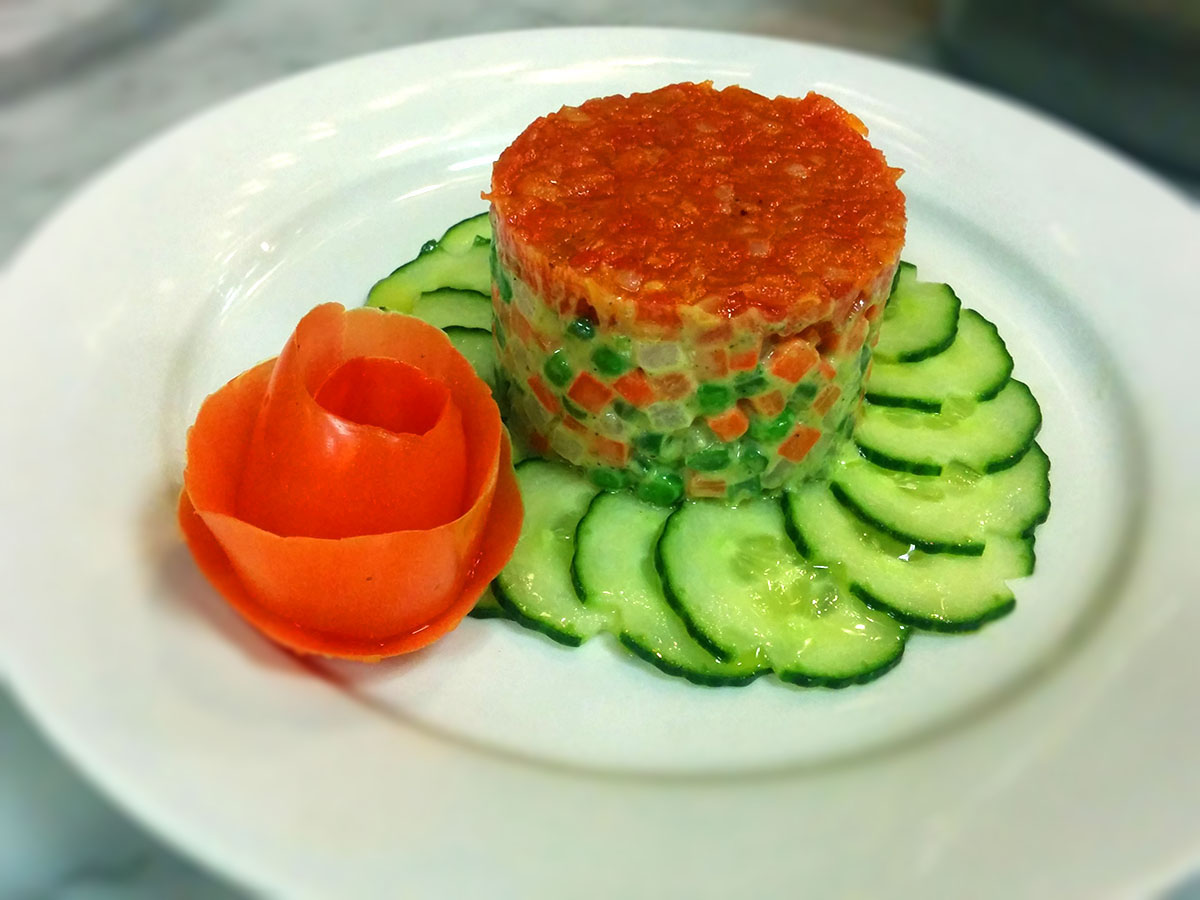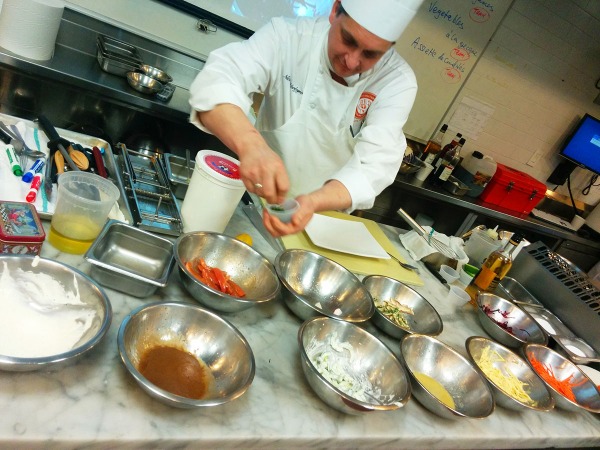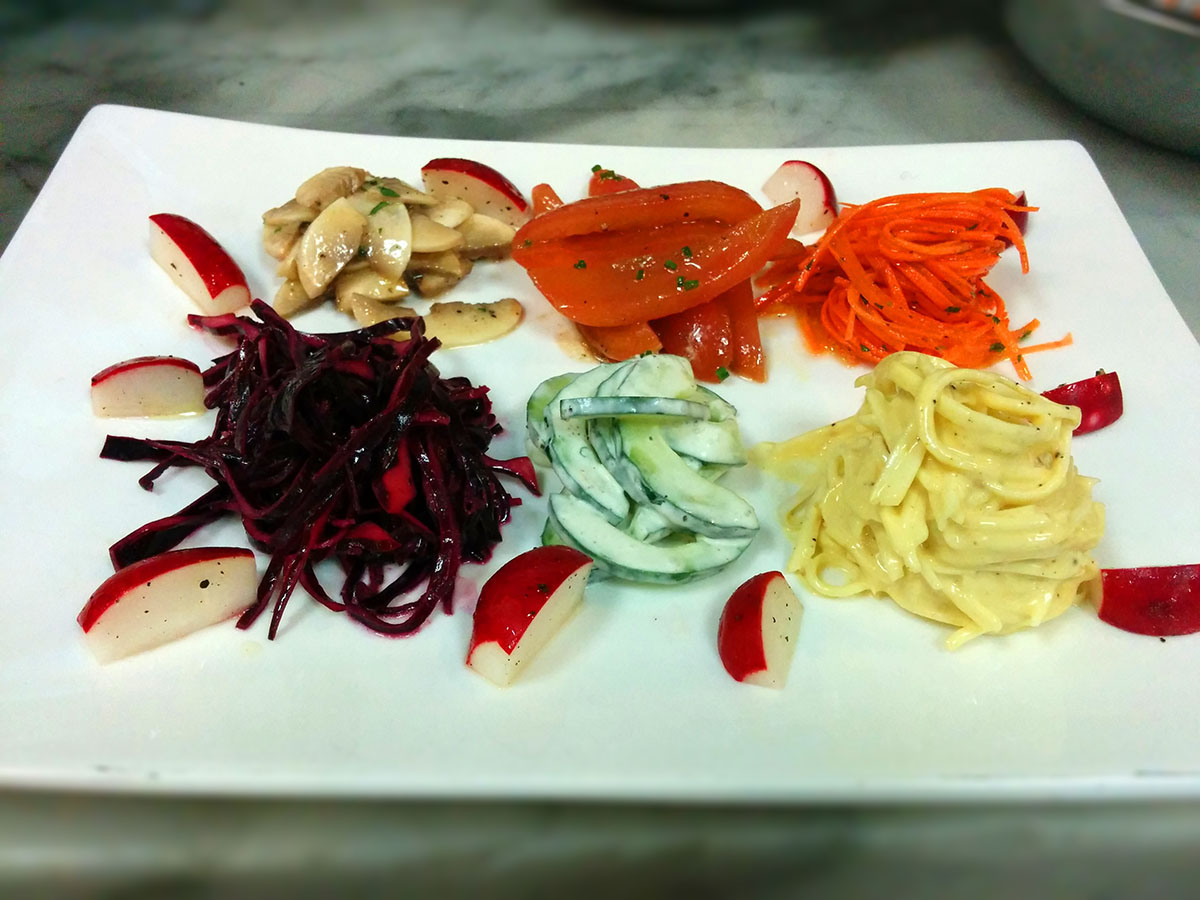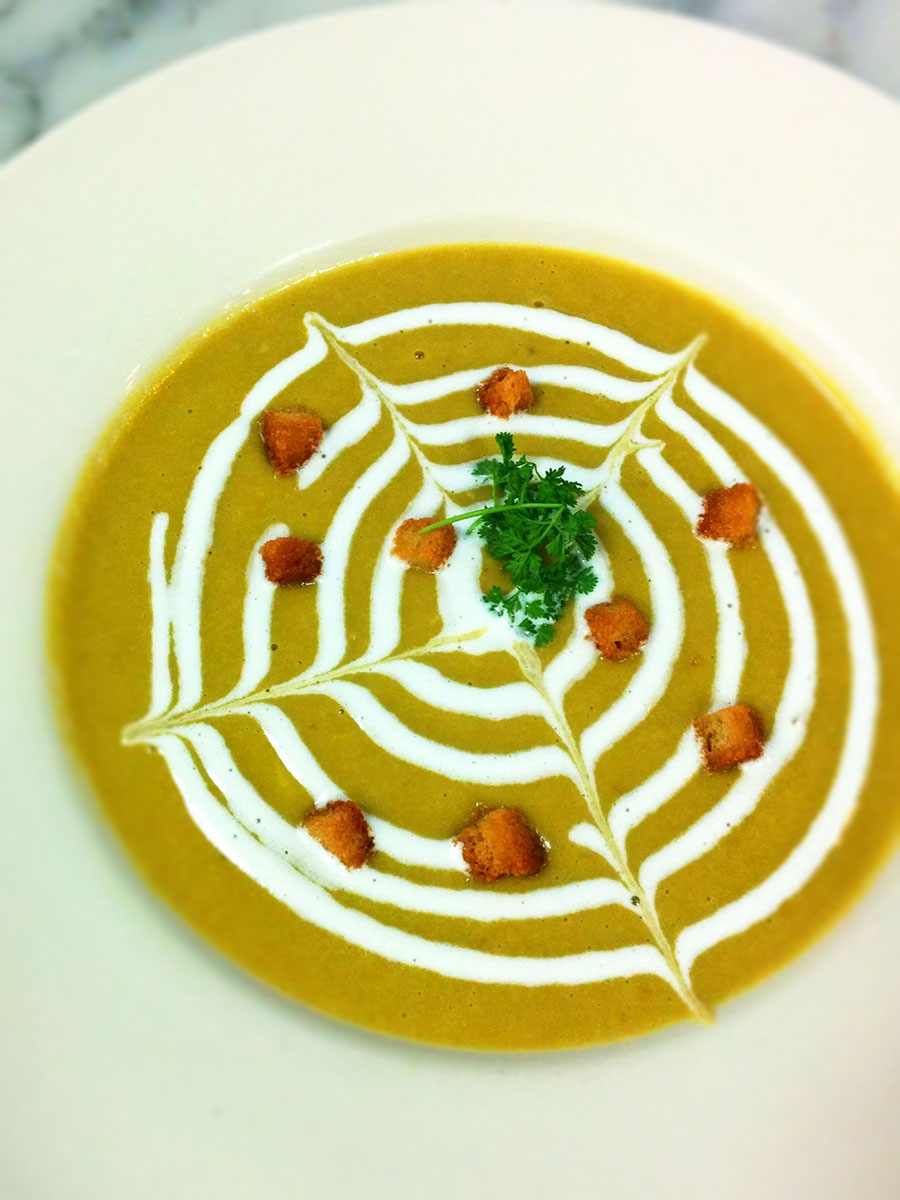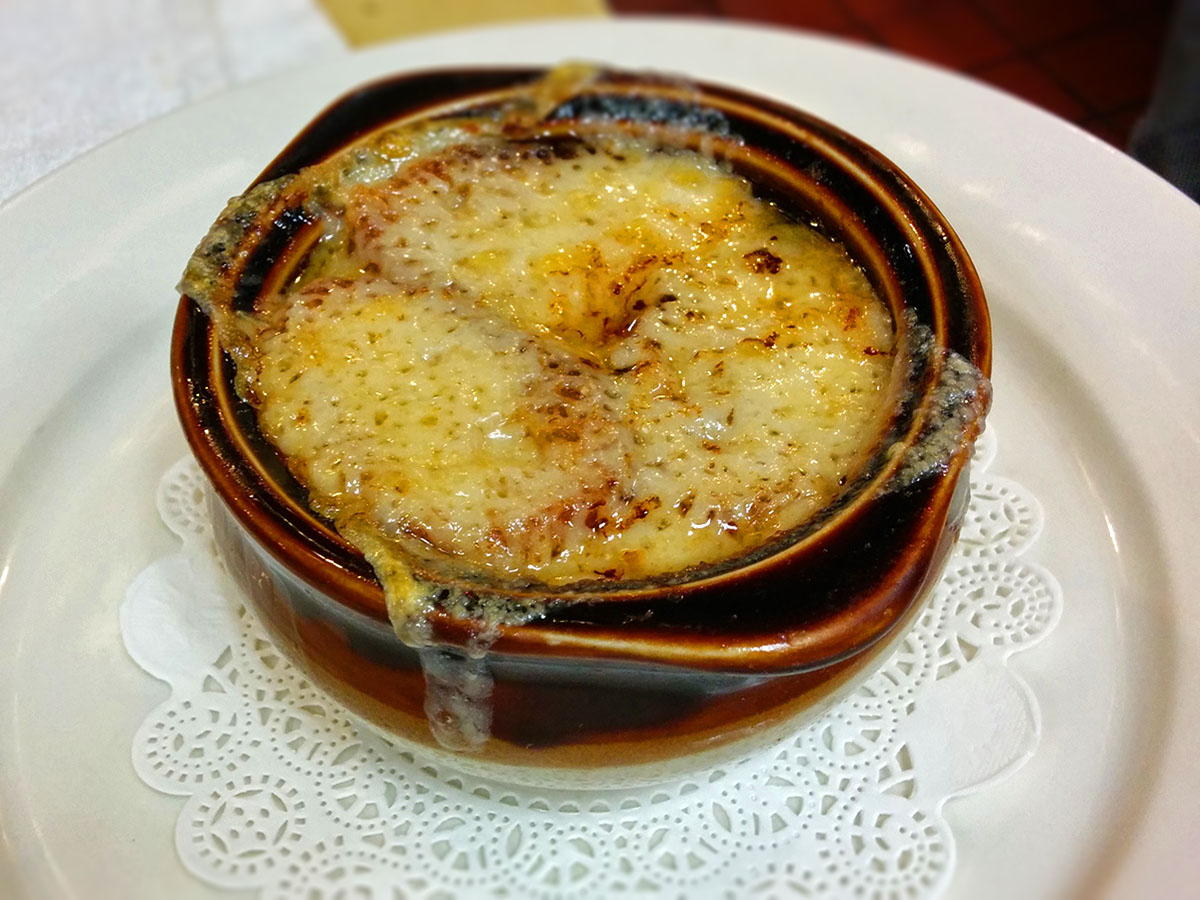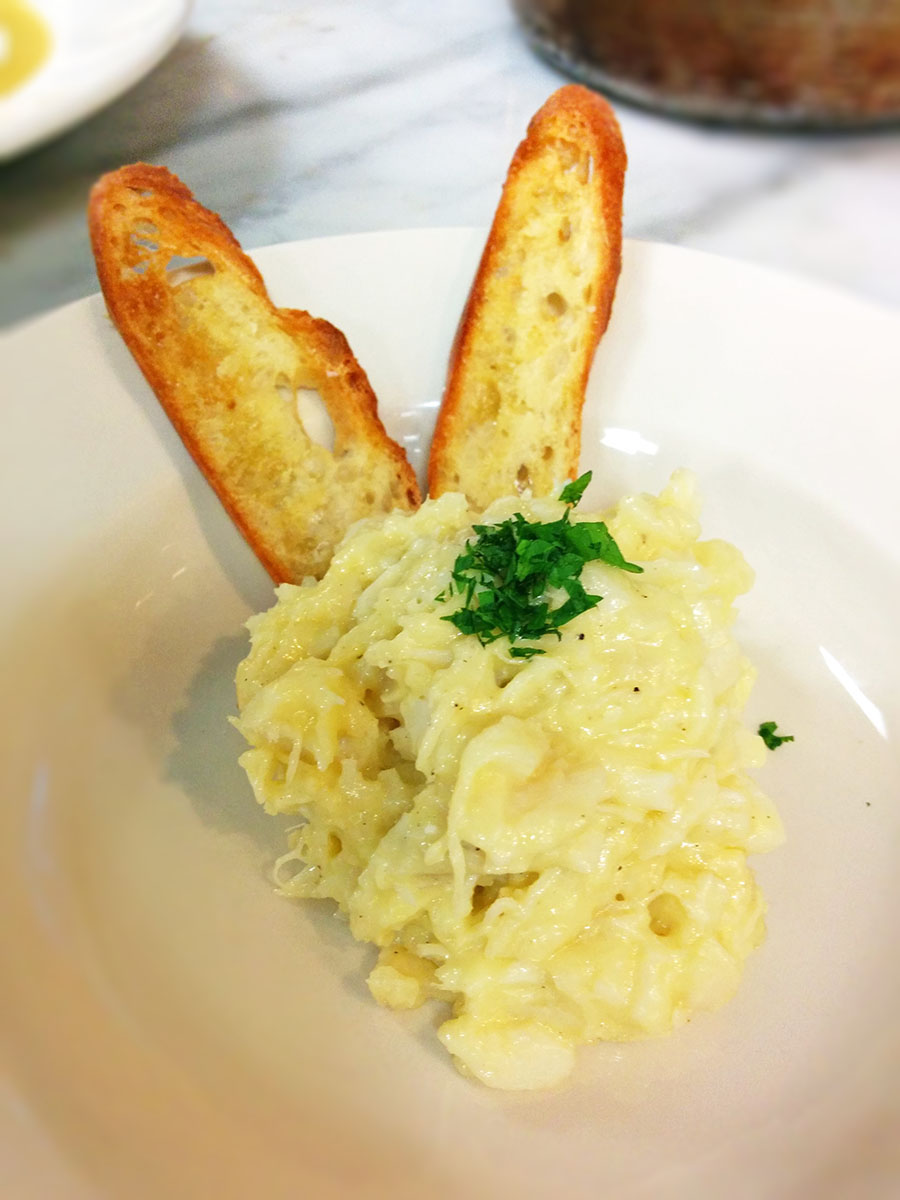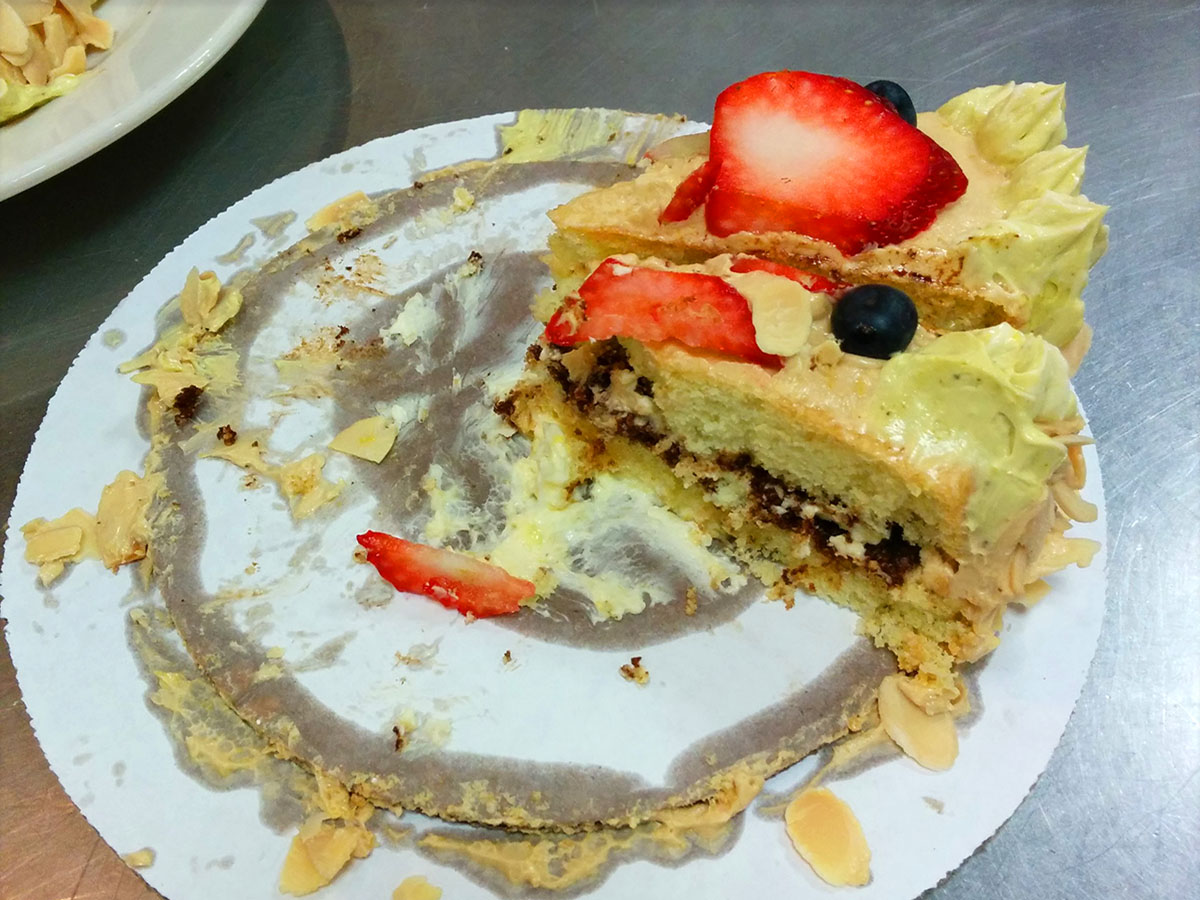After several introductory classes of stock and sauce making, we moved into making complete dishes. Namely, salads, vegetable dishes and soups. I tried not to yawn. “Vegetables are important!” insisted my chef-friend Wendy. “It’s difficult to do them well.” I tried to muster some excitement, but the thought of making 6 different types of vinaigrette was already making my whisking arm ache.
In class, we were greeted by some new faces. Chefs Ray and Janet were taking time off and so we were under the tutelage of Chefs Dominique, Nicolay, Guido and Jose for a few lessons. Immediately, we had to adjust our bearings to the instructor. Chef Ray’s macedoine cut was a little larger than Chef Nic’s, so I scrapped my vegetables and started over, lest we get chastised for improper taillage.
Chef Nic was also much heavier handed with seasoning. When we were repeatedly told that our food didn’t have enough salt or lemon, we would add more to the next dish. Finally, for our final plate of celery rémoulade, I dumped a big scoop of mustard and salt into the bowl, then tasted the celery root. Horror curled my tongue. “I think it’s too salty,” I whispered to my partner. “Oh no, what do we do?” He swiped at the sauce and said, “Actually, I think it’s fine, it just needs a little more lemon.” We brought our assiette de crudités up to the front and held our breath. “There’s too much dressing on the mushrooms, see how it’s pooling on the plate here?” said Chef Nic. “Also, there’s a little too much dressing on the celery root. But other than that, it’s fine.” I couldn’t believe my ears. “So, the celery rémoulade is not too salty?” I asked. “Nope, it’s just right,” Chef Nic replied. “Remember, restaurant food is paired with wine, and needs to be saltier than food eaten without wine. If you have a table where everyone is drinking wine except for one person, it’s not unusual for that one person to complain that the food is too salty, while everyone else is happy.”
So the salads, how did they taste? Turns out that when you treat each ingredient with care and allow its full expression to shine, salads can be flavorful, beautiful and dare I say it, exciting. We made a traditional salade niçoise, and each element was carefully washed, cut, seasoned and dressed to create a perfectly harmonious plate. “Why are you peeling the green pepper?” someone asked. “Because I don’t want the skin,” said Chef Dominique. We laughed. “Sometimes the skin can be a little tough or bitter, so I peel it,” Chef Dominique explained.
The macédoine de légumes cooked vegetable salad is actually one of my new all-time favorites, an exercise in how simple ingredients cooked well can come together to create something truly stunning. You make mayo and tomato sauce, then cut carrots, turnips, beans and peas into uniform pieces, cook each vegetable separately, then bind the vegetables together with the mayo and some basil puree, topped by a layer of tomato sauce. The result is creamy and acidic, sweet and savory, refreshing and satisfying. This was one of the most popular salads of the late 19th century, and is still often served in Parisian bistros today, but there probably aren’t any restaurants in NYC serving it now. Quel dommage!
We also made a series of soups: split pea, classic consommé, cream of cauliflower, farmer-style vegetable soup, and of course, French onion soup. Soup day was actually the most stressful day we’ve had in class so far. The lesson requires a ton of ingredients and vegetable chopping, plus long simmer times, meaning we were pressed for time from the moment we walked in. It didn’t help that we burned our first batch of onions for the French onion soup and hard to start the caramelization process over again. “Man, whoever wrote this lesson was really ambitious,” said Chef Nic. “It’s crazy, who learns all the soups under the sun in 4 hours? Haha, you!”
For the pureed soups, we had a Vitamix blender on hand to pulverize every solid to smithereens. “Now guys, remember to remove the bouquet garni before you put your soup in the blender,” said Chef Nic. “You laugh, but students have done it before! If you forget to take it out, you’ll know because the blender will NOT work.”
With its bubbling blanket of cheese and floating croutons, French onion soup is a showstopper. However, the most technically interesting soup we made was the consommé, a soup made from a stock that has been completely clarified, with all impurities and fat removed. How do you accomplish that? You take ground meat (beef for beef stock, chicken for chicken stock), vegetables and egg whites, and you mix them together to create a paste. Then you slowly mix it into the stock, and heat it to a simmer. Done properly, the meat mixture will float to the surface and form a raft, which catches the impurities in the stock as the proteins coagulate. This part is tricky because you have to keep stirring the stock right until the raft begins to form, then you must stop stirring to avoid breaking up the raft. After another 45-60 minutes of simmering, you carefully ladle out the clarified stock into another pot, then wick the surface with a long sheet of paper towels to absorb the fat. The result is a dark amber consommé, at once rich in flavor and austere in its purity. It’s not for everyone, but if you can taste a good consommé once in your life, you’ll have a deeper appreciation for natural, unedited flavors.
For an even richer consommé, you can make double consommé by taking your first batch of consommé and repeating the process again. Oh my!
Amidst all the salads and soups, we squeezed in cod brandade, a fluffy mixture of salt cod, mashed potato, cream and olive oil. It was a decadent combination, to say the least. Chef Dominique tasted his brandade, “It’s really rich eh? But that’s ok, olive oil is good for you.” He grinned. “That’s why we add a little bit of the cream, because it’s bad for you. Mmm, this is really good. Like we say, aw haw haw!”
At one point, we’d run out of cream so I went next door to the pastry kitchen to borrow another carton. The students next door were sculpting eye-popping cakes and I jokingly hinted, “Does anyone want to trade some cod brandade for cake?” Lo and behold, at the end of class, someone donated their cake to the sugar-deprived students next door! I was too busy inhaling the cake to get a picture of it in its entirety, but here are the last two slices.
Culinary school is a wonderful, magical place.
